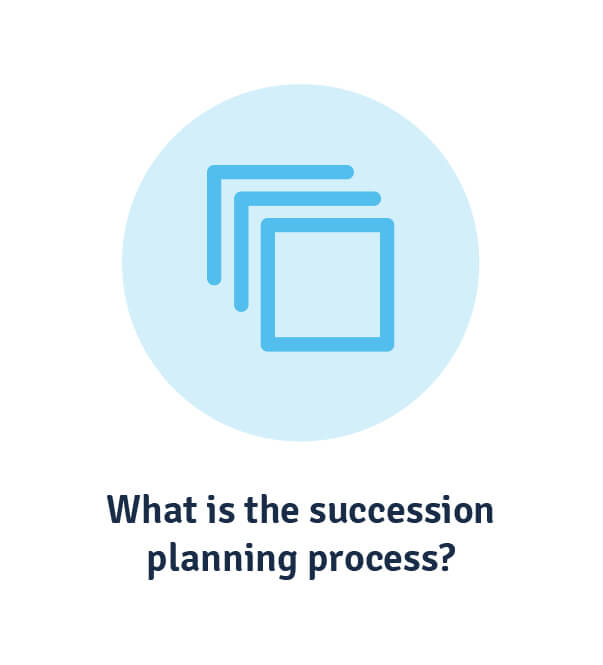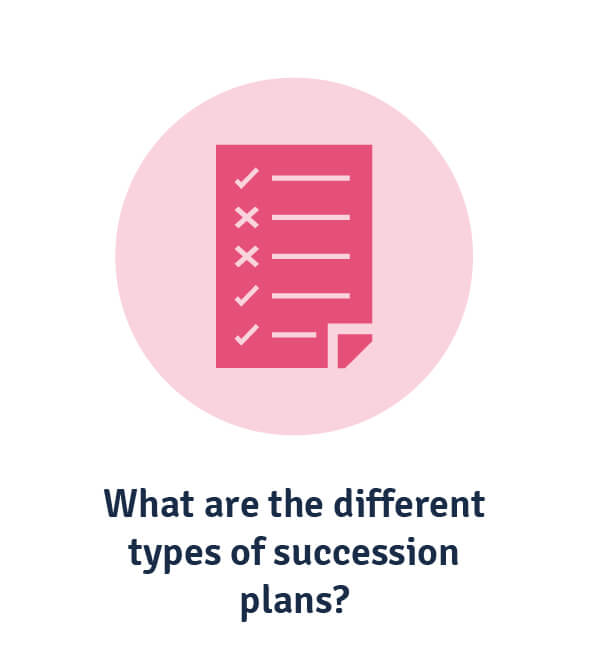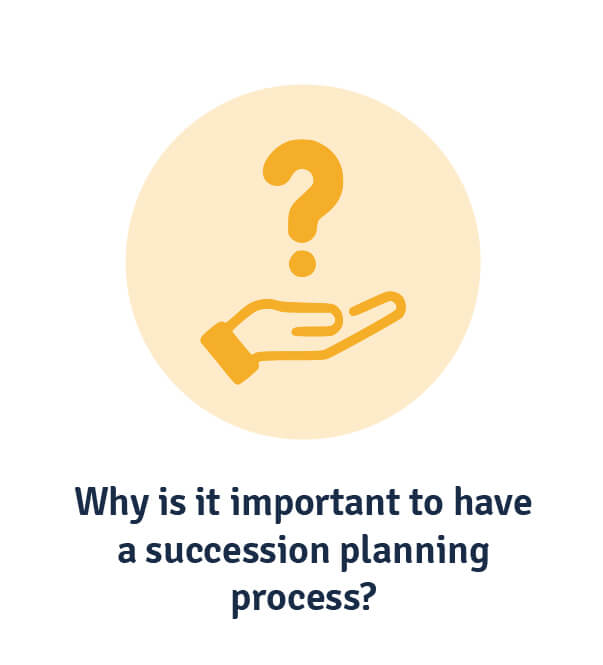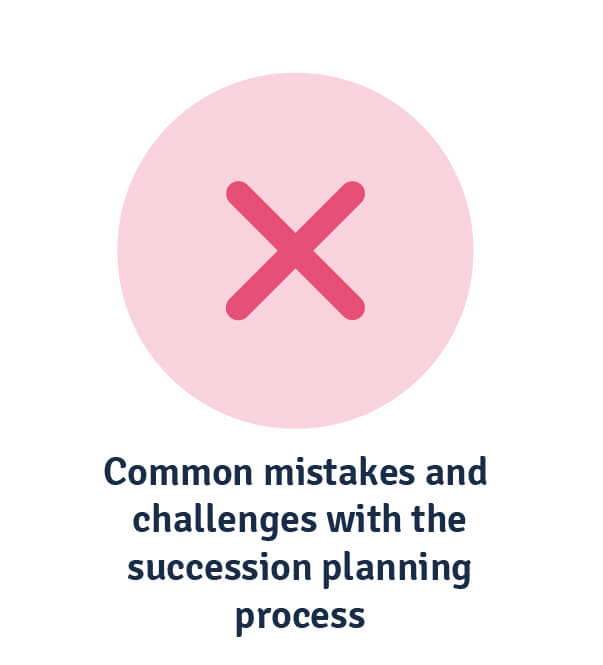The Step-by-Step Succession Planning Process and How It Benefits Your Business
As natural attrition leads to the loss of knowledgeable and capable employees, you’ll find vacant positions that need to be filled quickly to keep your business running smoothly. But choosing successors for key positions can be daunting and time consuming. This is where the succession planning process comes in.
What is the succession planning process?
The succession planning process is the step-by-step procedure behind building a talent pipeline of future leaders in your organisation. It breaks the operation down into smaller actions, from identifying leadership needs within your business to appointing the best candidate for the role. The idea is to create a standardised and repeatable process to assist in future succession planning tasks.
What are the different types of succession plans?
There are two types of succession planning your company should have prepared.
Long-term
A long-term succession plan is developed years in advance. It’s a plan created with purpose, designed to identify key positions, the employees who can fill them and develop their skills for their future roles. A long-term succession plan uses a gap analysis to identify capability needs of the company and its employees to ensure business success.
Emergency
Think of emergency succession planning as contingency planning. It comes in to play when something unexpected occurs, such as vacancies in key positions, thus threatening the organisation’s ability to operate. It should cover things like temporary leadership while the search to identify a successor is carried out, as well the legal transferal of ownership.
Why is it important to have a succession planning process?
So why bother having a succession planning process in place when you could just select the best person for the job when the time comes? The simple answer is that a set process indicates a level of maturity and strategic focus in your organisation.
The long answer? Companies with a set succession planning process enjoy benefits to their employees, performance and strategy, and the management of their business as a whole.
Uncover capability gaps
A long-term succession planning process highlights the capability gaps in your company. Done well, it identifies the skills and expertise you have currently available within the organisation and reveals which additional skills your business needs if it’s to continue meeting its strategic priorities in the future.
Prevent loss of knowledge and expertise
A succession plan should focus on developing employees with leadership potential into capable successors of key roles. It ensures that critical institutional knowledge is not lost when leaders or other important talent leave the organisation, allowing your business to continue operating as usual with no loss in productivity or performance.
Having a succession planning process means that even when the unexpected happens, your company can and will continue running with minimal negative effect, because you’ll have successors or contingency plans in place to ensure the business continues running smoothly.
Improve retention and talent planning
When employees are aware of or offered opportunities for career development, they’re more likely to stay with their companies. Staff who feel valued by and important to your organisation are more engaged and experience better job satisfaction, leading to increased retention.
Higher retention makes talent planning and resourcing easier for you, too. SHRM’s benchmarking data puts the average cost of new hires at $4,700, if not even higher. By retaining more critical positions, your reliance on recruitment and external candidates for the jobs will be decreased (and that means lower costs).
Identifies training and development needs
Capability gaps, business-critical knowledge and career progression are key factors in identifying training and development needs. Whether succession planning reveals the gaps training can close in your workforce’s capabilities or helps assess the development needs of your talent in their career growth, it will identify the training your workforce needs to meet strategic priorities for business success.
This is where you might find a performance learning management system (PLMS) useful. A PLMS is a dynamic AI-powered platform for synchronising L&D experiences to business performance. In using one, you’ll be able to link your capability training and development to business strategy, enabling organisational efficiency.
The 5 steps in the succession planning process
Here are the five key steps to building a comprehensive succession plan.
Step 1: Identify key positions and needs
The first step is to identify key leadership positions within your organisation. This means reflecting on the qualifications that make leadership positions business-critical roles. This could be knowledge, experience, or soft skills such as communication and customer relations.
Then you need to consider which of these positions are at risk and need successors the most. There are two factors you should consider when deciding which positions to prioritise: Vulnerability and criticality.
- Vulnerable positions are those that have no clear successor in place already, due to the potential for knowledge loss when the position becomes vacant.
- Critical positions are the ones that, if they became vacant, would threaten business operations and the organisation’s ability to meet strategic priorities.
To work out which positions might become vacant in the future, ask yourself:
- Who is close to retirement?
- What is the overall attrition rate in your organisation?
- Are any employees currently pregnant?
Finding the answers to these questions will help you identify which particular positions should be prioritised in your succession planning activities.
Step 2: Develop job profiles
To determine who your strongest candidates for succession are, you should build a job profile outlining the requirements and performance expectations of the role.


The job profile allows you to compile a list not only of required capabilities, but the competency required in each capability to be successful in the role. It shows the gap between current capabilities and capabilities that will be needed in the future as the position evolves, by comparing a potential successor’s capability profile with the requirements of the job profile. This allows you to build a development plan for your potential successors.
Step 3: Nominate potential successors
Using your job profiles, you should be able to find the key employees who fit the capability and competencies criteria you outlined. Your current leaders should nominate who they think would be the best fit for taking up leadership roles, but remember, this is just a nomination process. You need to ensure that the individuals put forward actually have an interest in leadership development for their career goals. Succession planning won’t be effective if succession candidates aren’t interested or engaged.
It’s also important to note that while an employee may have the right qualifications for a key role on paper, they may not be the right candidate. Leadership is much more than having the right technical skills to perform the job, and effective succession planning takes that into account, ensuring that future leaders are also a good fit culturally.
To determine whether employees are suitable for nomination to receive development into a successor role, ask yourself if the employee meets these qualifications:
- Consistent high performance
- Recognised by peers and managers as a future leader (i.e. emergent leadership)
- Upholds organisational values
- Fits with organisational culture
- Seeks innovation.
Perhaps you have no one suitable in your company who you can hire for the position internally. In that case, it’s a good idea to use your job profile to find qualified external candidates during the recruitment process.
Step 4: Determine development needs
A key component of succession planning is developing future leaders, so it goes without saying that once you’ve nominated the employees to take over key roles, you need to develop their leadership capabilities so they will be prepared to step into the role when the time comes.
Performing a capability assessment on your hopeful candidates will reveal their current capabilities, highlighting the gap between what they know and what they need to know.
Once you’ve defined goals for your future successors’ development needs, you can find opportunities for training their skills.
- Mentoring from the incumbent leader
- Formal and informal coaching activities
- Temporary trial runs in the incumbent’s role
- Taking on more responsibility to transition into the leadership role.
A great way to find out if an interested candidate is the right fit is to stage a trial run, giving candidates crucial experience in leadership of a team. Not only will it highlight how they work as a leader, but it will identify development needs in their own capabilities.
Step 5: Evaluate and measure the succession plan
As with all workforce planning activities, succession planning is an ongoing process. The first thing to consider here is documenting the transition process. Keep track of:
- Everything that went right
- Everything that went wrong and the gaps that still exist
- What could be made more efficient, or was confusing during the transition
- The requirements of this specific role.
Not all the kinks in your succession plan will be obvious straight away, so you also need to measure its effectiveness over time. This will help you develop a more sustainable and effective succession planning strategy for future use in your organisation.
Common mistakes and challenges with the succession planning process
The biggest mistake in succession planning is almost as bad as not having a succession plan at all: Not giving yourself enough time. A succession plan, and the training of succession candidates, can’t be done overnight. In fact, it’s better to be prepared with a succession plan in place years in advance to avoid panic, as potential successors need time to identify and develop the right skills for their future roles.
This is especially true for business succession planning, where moving employees who lack necessary training into a key position could cause business operations to grind to a halt.
Worse still, having no succession plans in place at all means you have no contingency plans should someone leave your organisation unexpectedly. Again, this is a dangerous position to be in should you lose talent from critical roles as your company may stray off course.
At the very least, you should have plans in place to install interim management until you can find new employees with the key skills your company demands.
Key takeaways
The process of succession planning is simple once you’ve broken it down into smaller steps. It’s a crucial element for maintaining workforce and business health and maturity. Not only does it reveal gaps in capabilities, but it ensures employee satisfaction.
Related Reads on This Topic

Strategies for Effective Women’s Leadership Development in Your Organisation
Dive into women’s leadership development and the methods you can use to effectively build women up for leadership roles in your organisation…

Your Leadership Development Plan Template & How to Write One
Dive into the step-by-step process of writing a leadership development plan to ensure effective succession planning and business success…

The Importance of Retaining the High-Potential Employee (aka the HiPo)
Retaining high-potential employees (HiPo) is highly important for any business. Find out why and how your company can achieve this…





